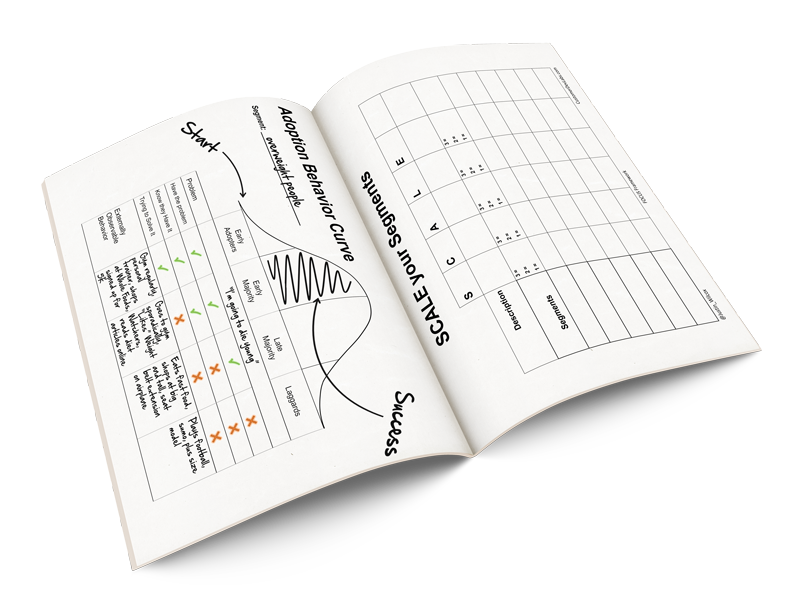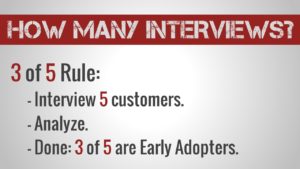You know the #1 Rule of Validating the Problem is…to not talk about your solution.
If that’s the case, how and when, do you pitch your solution? Watch this video for a quick walk-through on how to sell, without pitching (i.e. how to nail a solution interview).
When do you Pitch your Product?
The answer, for me, is easy:
Solving a customer’s problems, especially in the early stages, is a collaborative effort.
You need feedback on your solution. You need to know when it’s going to fail. You need to know who will use it, and who won’t. You need to know how much they’re willing to “pay” for it. That information won’t be found “pitching” a solution.
Pitching is inherently a one-sided affair – it’s a monologue, not a dialogue. We want a solution dialog.
Instead of pitching, try solution interviewing.
The Sales Pitch is Dead
In the B2B scenario, I replace traditional pitching with Solution Interviews.
Solution interviews provide insight on:
- Will the solution work?
- Where are the solution’s weaknesses?
- Is your marketing copy right?
- Is the price right?
- Is she ready to buy?
The solution interview is where you move from “do my customers have a problem they’re trying to solve” to “can I build a business solving this problem?”
The 3 P‘s of Solution Interviews
Note: watch the video for a full description of these phases.
- Problem Reflection – This is a chance to recap the points from your Problem Interview and allow the customer to refocus on the problems that they need fixed. The problems reflected should of course be carefully selected from all the problems you discussed in the Problem Interview. They should be the problems that you know you have a solution for!
- Proposing a solution – Your aim here is a discussion, a consultative approach as opposed to a one way, one-woman show! You are starting a conversation based on the common ground established in the Problem Interview and honestly asking for feedback on the potential solution/s you have come up with.
- Progress – Once you have the problems recapped and you’ve discussed the potential solution, it’s time to agree on the next steps. This will be your common “To Do” list featuring all the key moves to get you and your customer to A Problem Solved!
You will want to run the Solution Interview at a different time, post the Problem Interview. This will allow you the time to reflect on issues raised and identify the problems you can solve. The time to come up with the optimum solutions for the customer and put together a viable action plan. This type of approach will ensure you NEVER have to pitch again and as a result, eliminate the uncertainty of will they/won’t they get back to me.
With a dialogue, you can identify any “glitches in the Matrix” there and then. It allows for more flexibility and also a more personal approach. You have already had contact and obtained agreement for future contact with the Problem Interview so the Solution Interview is all about trust and an honest delivery of an end to the customer’s problems! Prepare to be the one who Saves the Day!
Customer Development Made Easy…
Summary
Watch this video for a walk-through on selling without pitching and how to nail your solution interview. Solution Interviews are the ideal way to open up communication, offer potential solutions and gain the trust, and business, of your customers. Because you have taken the time to establish their problems, expressed in their own words, they now know you’re not just proposing something “off the shelf”, something for everyone.






Very curious how you get orgs to commit this much time to this process. I feel comfortable reaching out for one interview, but two interviews and then homework? Any guidance on how to spin that or real world experience would be greatly appreciated!
It’s a great question Camille, one I had when I started this process too.
The key is to remember that you’re working with a company to solve one of their problems. Your first interview is to discover their problems, the second interview is to discuss how you can help solve them.
If they really care about the problem, they’ll be eager to talk to you about solving it. If they don’t really care about the problem, they’ll see the second interview as a burden and they likely won’t speak to you.
Either way is good news for you, because you’ll find out how serious they are about solving the problem.
Does that help?
Mate this is great stuff – hits the nail on the head
This is HUGE! Great work Justin.
Thanks Justin!